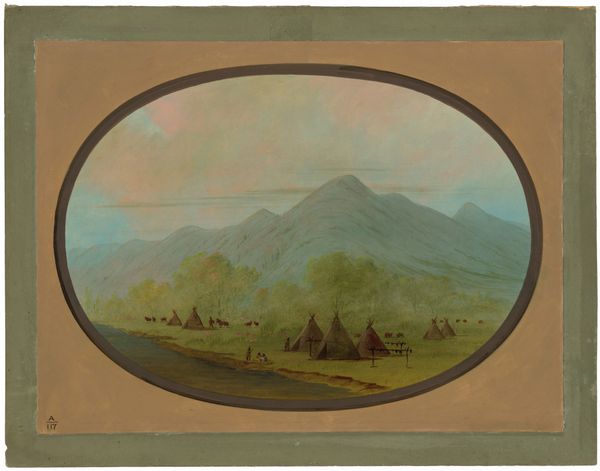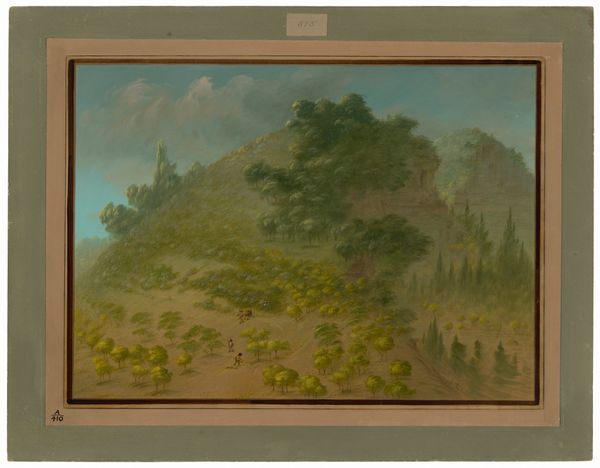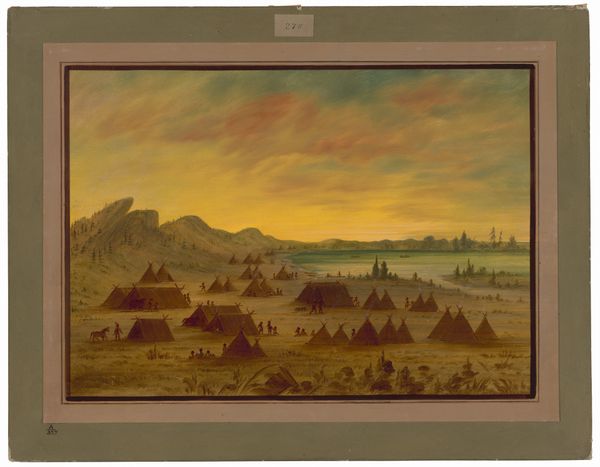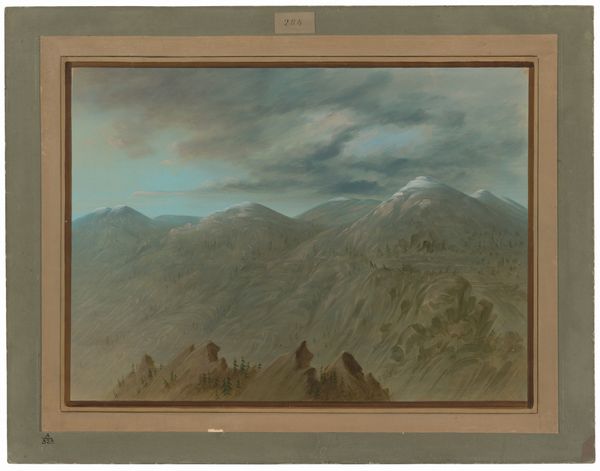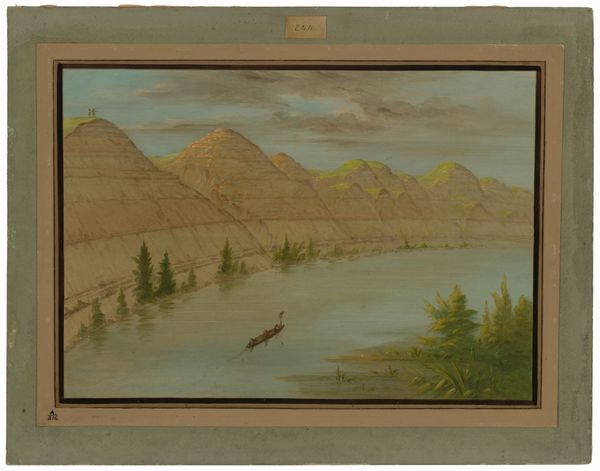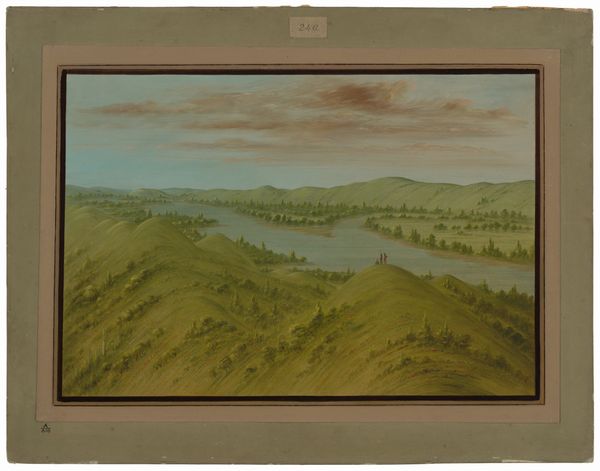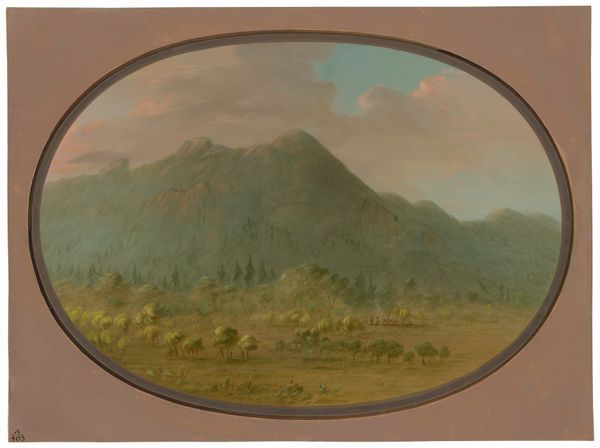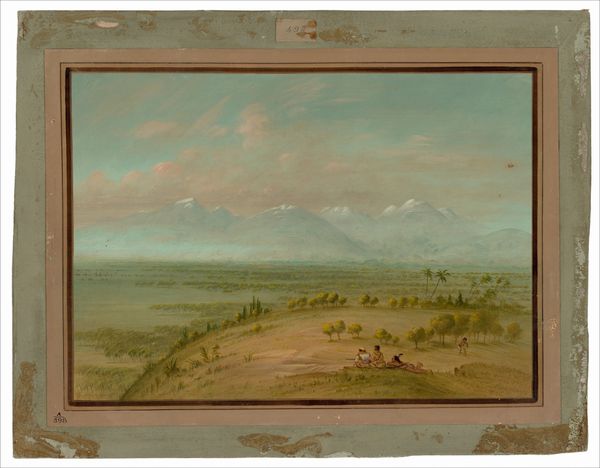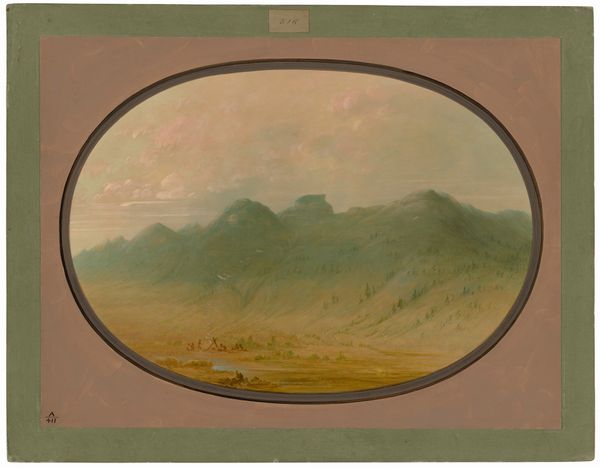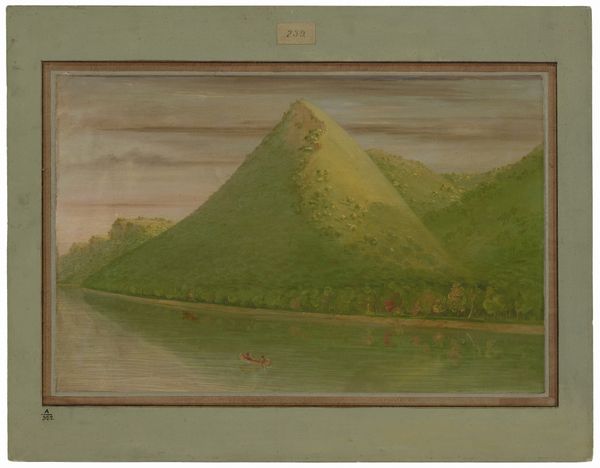
painting, gouache
#
water colours
#
painting
#
gouache
#
landscape
#
watercolor
Dimensions: overall: 46.8 x 62.5 cm (18 7/16 x 24 5/8 in.)
Copyright: National Gallery of Art: CC0 1.0
Curator: What strikes me first about George Catlin’s watercolor painting "A Crow Village and the Salmon River Mountains", created sometime between 1855 and 1869, is how serene and undisturbed the scene feels. There’s a real harmony here. Editor: Undisturbed? I see a tension, actually. The small, almost fragile-looking village nestled in the valley feels overshadowed by the imposing mountains in the background. A kind of premonition hangs in the air. Curator: I can see that. The mountains do have a monumental presence, almost watchful. Consider that mountains, across cultures, often represent stability, endurance, the dwelling place of spirits, even a symbolic ladder to the divine. Perhaps their depiction here reflects the Crow people’s spiritual connection to the land. Editor: Perhaps. Or is Catlin, intentionally or not, setting up a visual power dynamic? These expansive landscapes often masked more sinister land appropriations in service to colonial narratives. Look at how small and indistinct the figures near the tipis are. Curator: That is a crucial point about perspective and visual storytelling. While the village appears contained, there's still a sense of everyday life unfolding – figures are working near the water. Catlin often focused on portraying Indigenous life as he encountered it, as a mode of preservation through art. There is a definite cultural weight embedded in this depiction. Editor: Exactly. This image should encourage viewers to consider what Catlin—a white artist documenting Indigenous people—chose to show, how he framed the narrative, and what socio-political contexts were at play during its creation. We have to remain critical while recognizing his intention for preservation. Curator: I agree, understanding art like this requires both aesthetic appreciation and critical examination. It is crucial to unpack Catlin's point of view along with the Crow tribe's placement in society during that period. Editor: Absolutely. It’s a testament to how landscapes can be charged sites of cultural memory and historical tension. Curator: Yes, the symbolic density in what seems a straightforward rendering allows us to contemplate nature’s powerful effect on our cultural understanding. Editor: And the necessity of questioning representations from the past. They act as powerful documents of societal narratives.
Comments
No comments
Be the first to comment and join the conversation on the ultimate creative platform.
